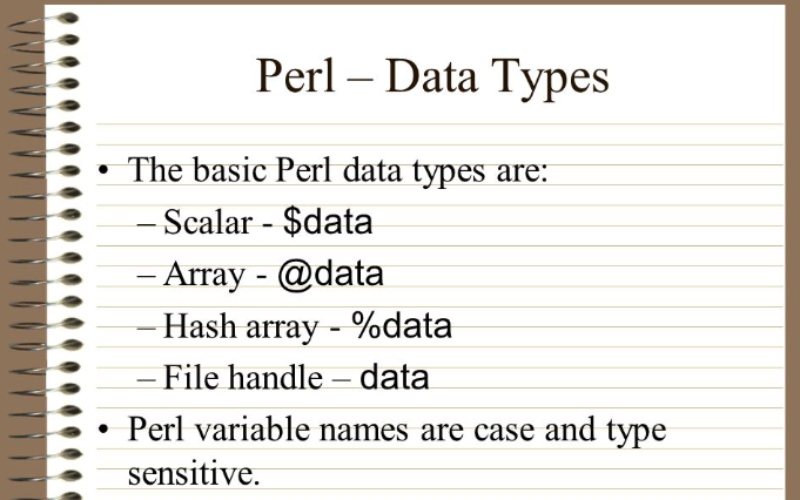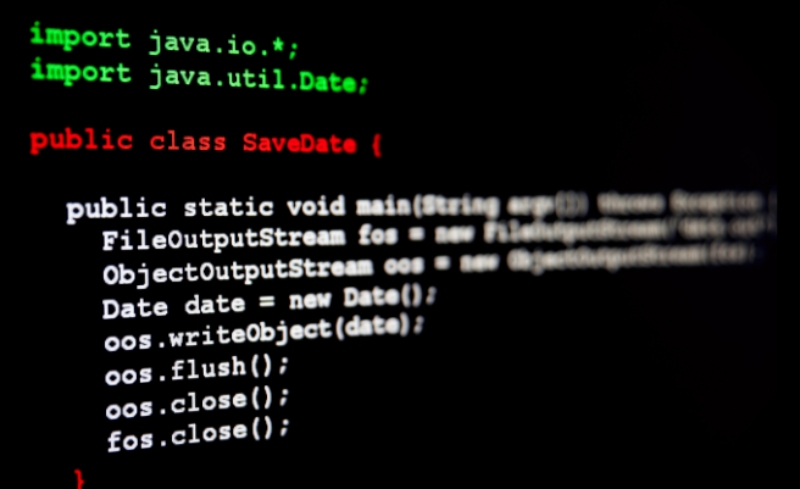
In Perl programming, understanding the different data types and how to use them effectively is crucial. This comprehensive guide provides a detailed exploration of Perl data types, including scalars, arrays, hashes, and references. By gaining a thorough understanding of these data types, you'll be able to write efficient and robust Perl programs. Let's dive into each data type, discussing their features, applications, and best practices.
Scalars
Scalars are single values in Perl that can hold various types of data, such as integers, floating-point numbers, strings, and special values. Here are some key aspects of scalars in Perl:
1. Numeric Scalars:
- Integers: Integer values represent whole numbers without decimals.
- Floating-Point Numbers: Floating-point values can include decimal points or scientific notation.
2. String Scalars:
- Enclosing Strings: Scalars can store text data enclosed in single quotes ('text') or double quotes .("text")
- Escape Sequences: Perl supports escape sequences to represent special characters within strings.
- Interpolation: Scalars allow variable interpolation within double-quoted strings.
3. Special Scalars:
- undef: Represents an undefined value.
- undef() Function: Used to explicitly set a scalar value as undefined.
- defined() Function: Checks if a scalar is defined or not.

Arrays
Arrays in Perl are ordered lists of scalars. They provide a convenient way to store and access multiple values. Let's explore arrays in more detail:
1. Array Basics:
- Array Declaration: Arrays are declared using the @ symbol followed by the array name.
- Array Elements: Elements in an array are accessed using indices starting from 0.
- Array Size: The size of an array can be determined using the scalar function or the $#array_name expression.
2. Array Functions:
- push() : Adds elements to the end of an array.
- pop() : Removes and returns the last element from an array.
- shift() : Removes and returns the first element from an array.
- unshift() : Adds elements to the beginning of an array.
3. Array Slices:
- Array Slice Notation: Allows accessing a subset of elements from an array.
- Positive and Negative Indices: Both positive and negative indices can be used to access array elements.
Hashes
Hashes, also known as associative arrays or dictionaries, provide a way to store data as key-value pairs. Let's explore the features of hashes in Perl:
1. Hash Basics:
- Hash Declaration: Hashes are declared using the % symbol followed by the hash name.
- Accessing Hash Elements: Elements in a hash are accessed using keys.
- Hash Size: The size of a hash can be determined using the keys function or the scalar function.
2. Hash Functions:
- keys() : Returns a list of keys in a hash.
- values() : Returns a list of values in a hash.
- each() : Returns key-value pairs from a hash.
- delete(): Removes a specified key-value pair from a hash.
3. Hash Slices:
- Hash Slice Notation: Allows accessing a subset of key-value pairs from a hash.
- Extracting Keys or Values: Hash slices can be used to extract either keys or values from a hash.
References
References in Perl allow you to create complex data structures and work with them efficiently. Let's explore references in more detail:
1. Creating References:
- Scalar References: References to scalars are created using the \\ operator.
- Array References: References to arrays are created using square brackets [ ].
- Hash References: References to hashes are created using curly braces { }.
2. Dereferencing:
- Scalar Dereferencing: Scalar references are dereferenced using the $ symbol.
- Array Dereferencing: Array references are dereferenced using the @ symbol.
- Hash Dereferencing: Hash references are dereferenced using the % symbol.
3. Complex Data Structures:
- Nested Data Structures: References allow the creation of nested data structures.
- Array of Hashes: Creating an array that contains multiple hash references.
- Hash of Arrays: Creating a hash where each value is an array reference.
Conclusion
In this comprehensive guide, we explored the diverse range of data types in Perl, including
scalars, arrays, hashes, and references. Each data type has its unique features,
applications, and best practices. By understanding and utilizing these data types
effectively, you can write more efficient and powerful Perl programs. Now that you have a
solid foundation in Perl data types, go ahead and experiment with them to unleash the full
potential of your Perl programming skills.
If you enjoyed this piece, we've crafted a related article delving into Single row functions in SQL. Explore it here.
final thought

by Harsh Verma
final thought

